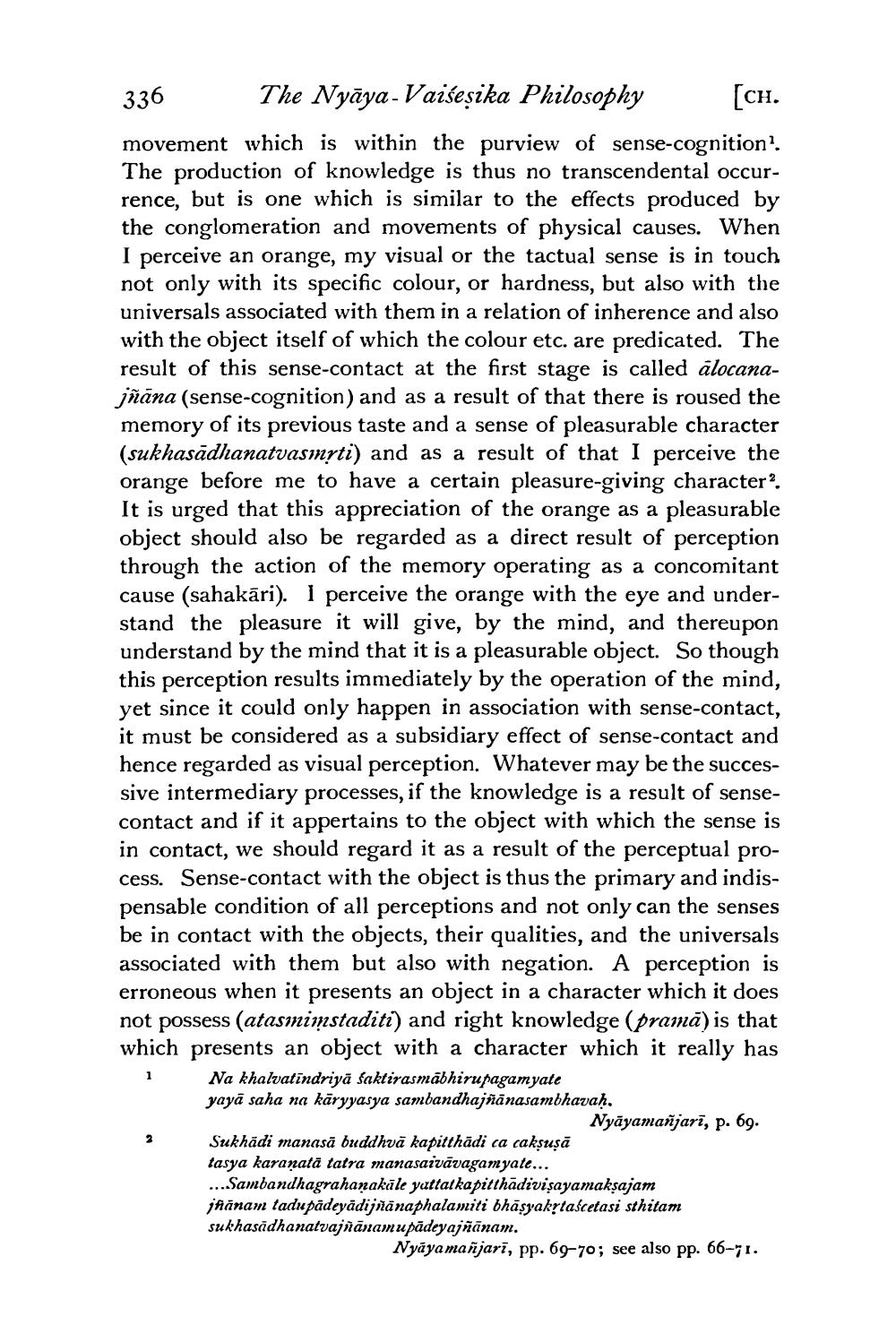________________
336
The Nyāya-Vaiseșika Philosophy [ch. movement which is within the purview of sense-cognition'. The production of knowledge is thus no transcendental occurrence, but is one which is similar to the effects produced by the conglomeration and movements of physical causes. When I perceive an orange, my visual or the tactual sense is in touch not only with its specific colour, or hardness, but also with the universals associated with them in a relation of inherence and also with the object itself of which the colour etc. are predicated. The result of this sense-contact at the first stage is called alocanajñāna (sense-cognition) and as a result of that there is roused the memory of its previous taste and a sense of pleasurable character (sukhasādhanatvasmrti) and as a result of that I perceive the orange before me to have a certain pleasure-giving character?. It is urged that this appreciation of the orange as a pleasurable object should also be regarded as a direct result of perception through the action of the memory operating as a concomitant cause (sahakāri). I perceive the orange with the eye and understand the pleasure it will give, by the mind, and thereupon understand by the mind that it is a pleasurable object. So though this perception results immediately by the operation of the mind, yet since it could only happen in association with sense-contact, it must be considered as a subsidiary effect of sense-contact and hence regarded as visual perception. Whatever may be the successive intermediary processes, if the knowledge is a result of sensecontact and if it appertains to the object with which the sense is in contact, we should regard it as a result of the perceptual process. Sense-contact with the object is thus the primary and indispensable condition of all perceptions and not only can the senses be in contact with the objects, their qualities, and the universals associated with them but also with negation. A perception is erroneous when it presents an object in a character which it does not possess (atasmimstaditi) and right knowledge (pramā) is that which presents an object with a character which it really has
Na khalvatīndriyā faktirasmābhirupagamyate yayā saha na käryyasya sambandhajñānasambhavaḥ,
Nyāyamañjarī, p. 69. Sukhādi manasā buddhvā kapitthādi ca cakşușă tasya karanata tatra manasaivāvagamyate... ...Sambandhagrahaņakāle yattatkapitthādivişayamaksajam jhanam tadupadeyādijñānaphalamiti bhāsyakytašcetasi sthitam sukhasadhanatvajñānamupādeyajñānam.
Nyāyamañjarī, pp. 69-70; see also pp. 66–71.




